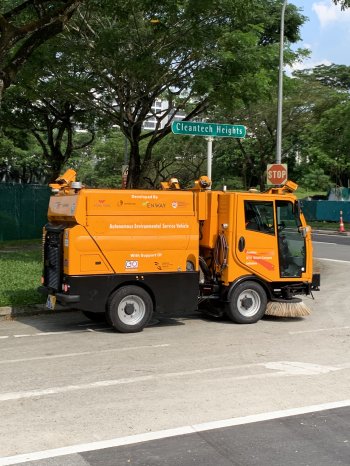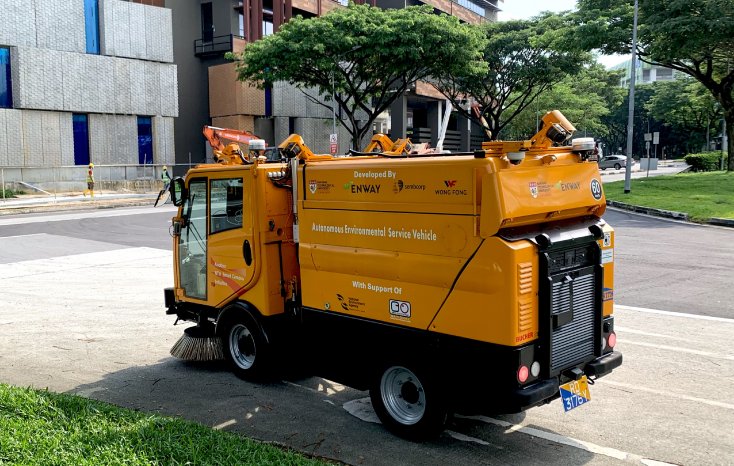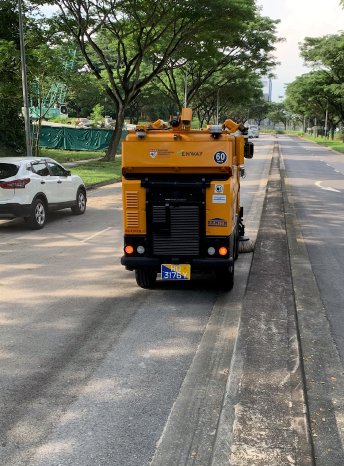The typical daily routine of the autonomous sweeper starts with trained safety drivers inspecting the machine, by going through a pre-operation checklist.
Once everything has been checked, the autonomous sweeper is ready to start operating from its base station on the NTU campus, where both a specially designed charging container and rubbish compactor are located.
After exiting from its base station, the autonomous sweeper is deployed to its designated trial area, before the real work begins: The sweeper cleans the streets autonomously, following a predetermined cleaning route. While operating, the cleaning machine is monitored from an off-site control center while data is collected on cleaning activities. In addition, all autonomous activities are recorded by the sweeper’s black box, which is connected to the Land Transit Authority’s monitoring system. Another safety measure is the presence of a safety driver, who can take control over the sweeper in case of an emergency.
Cleaning along the curb as well as in curves or on sloped roads are no problem for the sweeper. Should an obstacle be encountered on the road, such as a pedestrian crossing the street, the self-driving road sweeper stops automatically. The autonomous machine can sweep up dust and small particles, as well as leaves or rubbish that could be found on the road. Once swept up, all of the material is collected in the sweeper’s hopper and a clean road is left behind. Only when the entire cleaning route has been followed and cleaned properly, the sweeper’s task for the day is complete and it will return to its base station.
Back on the NTU campus, the self-driving road sweeper autonomously empties its hopper into the rubbish compactor before plugging in for recharging in anticipation of the next cleaning run.



